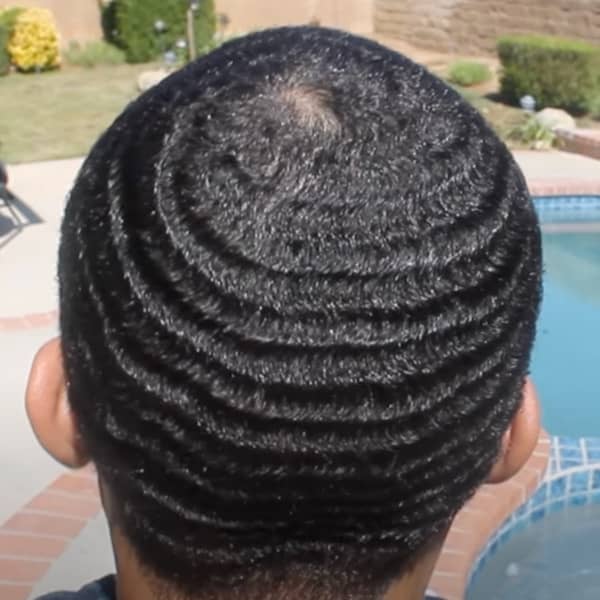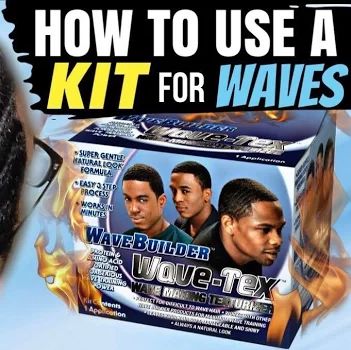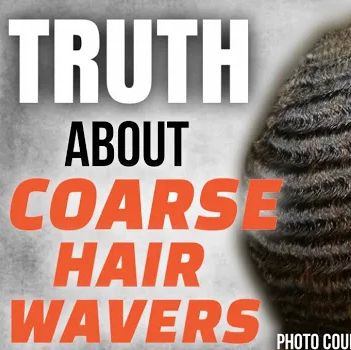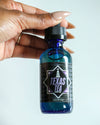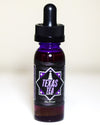Many people tend to ask me what are the best products for 360 waves. For me, oils are the best for maintaining healthy looking waves and a healthy scalp. However, your natural hair porosity should determine which products you use for your daily hair routine. The blog will cover my top 5 oils for low porosity hair!
What Is Hair Porosity
Hair porosity refers to how well hair can absorb and retain moisture. There are three levels: low, medium, and high, each of which has a significant influence on your hair.
As the importance of hair porosity for naturals grows, so does their desire to learn not only what type one possesses but also what products would be best at penetrating each layer.
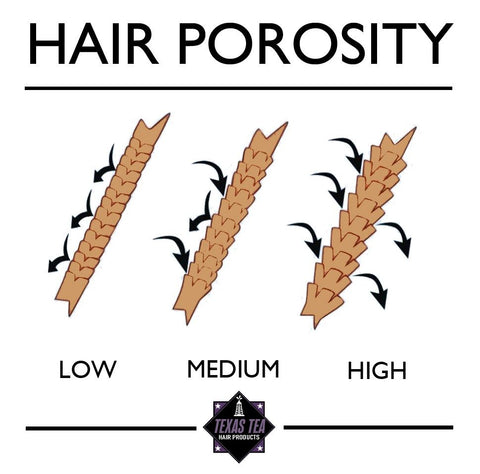
How to Determine Your Hair Porosity with the Float Test
One of the best ways to determine your hair porosity is by performing a simple test at home. All you need is a glass of water and a strand of your clean, dry hair. Gently place the strand in the water and observe how it reacts.
If it sinks, you have high porosity hair; if it floats, you have low porosity hair; and if it sinks for a few seconds before floating back up, you have normal porosity hair.
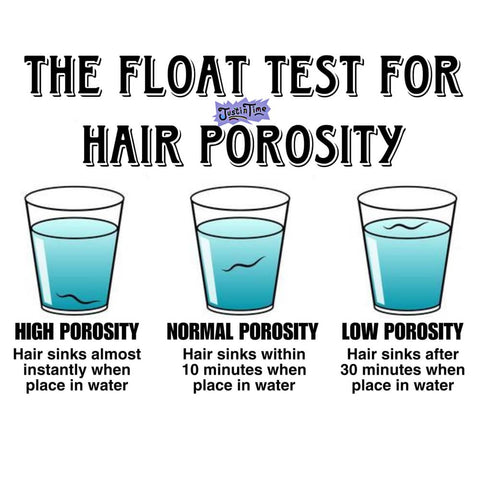
Once you know your hair porosity, you can better understand how to care for it. For example, those with high porosity hair may find that their strands are prone to frizz and always seem dry, no matter how much they moisturize.
This is because high porosity hair has larger pores that allow moisture to escape easily. As a result, naturals with this type of hair should look for products that can help seal in moisture, such as oils and butters.
Medium porosity hair is the most versatile, as it can accept and hold onto moisture without looking or feeling oily. Naturals with this type of hair may find that their strands have a healthy balance of moisture. As a result, they can use a variety of products to achieve their desired results.
Low porosity hair, on the other hand, may appear oily and feel heavy because it doesn't absorb moisture easily. This can be frustrating for naturals who are trying to achieve hydrated, healthy hair. In this case, it's best to use lighter products that won't weigh down the hair, such as leave-in conditioners and water-based moisturizers.
Now that you know your hair porosity, you can choose the right products to help you achieve healthy, beautiful hair!
1) Argan Oil for Low Porosity Hair
Argan oil has become quite popular among naturals in recent years, and for good reason. This light oil is derived from the Argan nut of the Argan tree, which thrives in southwestern Morocco. Argan oil, long cherished for its abundance of antioxidants, lipids, proteins, vitamins A and E as well as phytosterols and squalene.
Argan oil is pricey, but it's well worth the money since it moisturizes, tames frizz, adds shine without adding weight or build-up to low porosity hair. This is an excellent option for combining with leave-ins or a light sealant on the hair.
Best Ways to Use Argan Oil for Low Porosity Hair
Argan Oil as a Sealant
There are a number of different ways to use Argan oil on natural hair. When used as a sealant, Argan oil is great for low porosity hair because it helps to lock in moisture. Simply add a few drops of oil to your palm, rub hands together and then smooth over damp or dry hair.
Argan Oil as a Leave-in Conditioner
Argan oil can also be used in place of your regular conditioner or leave-in. Simply add a few drops to wet hair after shampooing and conditioning as usual. You can also add a few drops of Argan oil to your favorite leave-in conditioner for an extra boost of moisture.
Argan Oil as a Deep Conditioning Treatment
For a deep conditioning treatment, combine 1/4 cup of Argan oil with 2 tablespoons of honey and 1/2 cup of aloe vera gel. Apply the mixture to clean, damp hair and cover with a shower cap. Allow the treatment to sit for 30 minutes before rinsing out.
Baobab oil is extracted from the seeds of the Adansonia tree, which is one of Africa's most distinctive oils. Baobab oil is an emollient and rejuvenator that revitalizes without weighing down hair while moisturizing. Baobab oil is excellent for hot oil treatments and a light sealer that leaves hair glossy without making it oily. Another benefit of baobab oil is that it protects against the sun while taming frizziness.
2) Baobab Oil for Low Porosity Hair
Baobab oil can be used on all hair types, but it is especially beneficial for those with dry or damaged hair. It is also a good choice for people who are looking for an alternative to coconut oil. Baobab oil is high in vitamins A, D, and E, which are essential nutrients for healthy hair.
It also contains fatty acids that help to moisturize and protect the hair. Baobab oil is also rich in antioxidants, which help to nourish and protect the skin.
Best Ways to Use Baobab Oil for Low Porosity Hair
Baobab oil is a natural oil that has many benefits for the skin. It is extracted from the seeds of the baobab fruit, which is found in Africa. Here are three ways to use baobab oil:
Baobab Oil as a Moisturizer
Baobab oil can be used as a moisturizer to keep the skin hydrated. To use baobab oil as a moisturizer, simply massage a few drops into clean, damp skin. You can also add a few drops to your favorite lotion or cream.
Baobab oil is non-greasy and absorbs quickly, so it won't leave your skin feeling oily or heavy. For best results, use baobab oil daily. You'll soon see softer, smoother, and more radiant skin.
Baobab Oil as an Acne Treatment
Baobab oil is a natural acne treatment that has been used for centuries in Africa. It is high in vitamin C, which helps to heal and repair the skin. Baobab oil is also rich in antioxidants, which help to protect the skin from damage caused by free radicals. The oil is also known for its anti-inflammatory properties, which can help to reduce the redness and swelling associated with acne.
When using baobab oil as an acne treatment, it is important to only use a small amount on the affected area. This oil is very potent and can cause irritation if used in too high of a concentration. It is best to start with a small amount and increase the amount as needed. Baobab oil can be applied directly to the skin or added to a carrier oil such as jojoba oil or almond oil.
Baobab Oil as a Wrinkle Reducer
Baobab oil can be used to reduce the appearance of wrinkles and fine lines. It is rich in vitamin C, which helps to stimulate collagen production. It can be applied directly to the skin, or added to your favorite moisturizer or serum.
When applied to the skin, baobab oil helps to plump up the appearance of fine lines and wrinkles. Baobab oil can be used on its own or mixed with other natural ingredients like shea butter or jojoba oil for even more wrinkle-reducing power.
3) Grapeseed Oil for Low Porosity Hair
Grapeseed oil is a fantastic option if you want to try Argan oil but don't want to spend too much. It's made from wine grapes and has the same fatty acids and vitamins as Argan oil, however it's significantly lighter in weight. Grapeseed oil includes antioxidants and anti-inflammatories that make it ideal for moisturizing and condition your scalp and hair.
Grapeseed oil, which is odorless and extremely light, is a great natural heat protector and extremely similar to jojoba oil in terms of composition. It is luxurious, silky texture is ideal for relieving dryness and discomfort while avoiding breakouts in all skin types since it won't clog pores or cause breakouts.
Best Ways to Use Grapeseed Oil for Low Porosity Hair
Grapeseed oil can be used on its own or combined with other oils and butters to create unique formulations for specific hair and scalp needs.
Grapeseed Oil as a Heat Protectant
If you have fine hair, grapeseed oil is a perfect natural heat protector because it's so light. It won't weigh your hair down like some other oils can. Simply add a few drops to your palms and run through your hair before heat styling. Grapeseed oil is also fantastic for taming frizz. Just add a few drops to your hands and smooth over problem areas.
Grapeseed Oil as an Anti-Aging Treatment
The antioxidants present in grapeseed oil can help to repair damage caused by free radicals, pollution, and UV radiation. These nutrients also work to prevent premature aging by fighting wrinkles and fine lines.
To use grapeseed oil as an anti-aging treatment, simply massage a few drops into your face and neck after cleansing.
Grapeseed Oil as an Acne Treatment
Grapeseed oil is non-comedogenic, meaning it won't clog pores. This makes it an ideal option for people with acne-prone skin, as it won't make breakouts worse. In fact, grapeseed oil can actually help to improve the appearance of acne scars and blemishes.
To use grapeseed oil for acne-prone skin, massage a few drops into your face and neck after cleansing. You can also add a few drops to your favorite moisturizer or foundation for an extra boost of hydration.
4) Safflower Seed Oil for Low Porosity Hair
Safflower seed oil is extracted from the safflower plant and has been used for treating hair loss since ancient times. This colorless, flavorless, and odorless edible oil has long been utilized to treat hair thinning and baldness. This rich in vitamin E and fatty acids light oil is perfect for low porosity strands.
Safflower seed oil is beneficial to hair growth and may be utilized in scalp massages as it improves blood circulation to the hair follicles. It penetrates the hair somewhat, making it a good choice for moisturizing and conditioning, but not as well as other oils. Safflower oil is non-greasy, so it does not weigh the hair down.
Best Ways to Use Safflower Seed Oil for Low Porosity Hair
Safflower seed oil is also rich in linoleic acid, an essential fatty acid that helps to repair the hair shaft and lock in moisture.
Safflower Seed Oil as a Pre-Poo Treatment
Safflower oil is a great pre-poo treatment for your hair. It helps to remove build-up and excess oils from your scalp, while also conditioning your hair. Plus, it's easy to use and affordable!
Simply massage a small amount of oil into your scalp and let it sit for 10-15 minutes before shampooing as usual. You'll notice softer, healthier hair with continued use!
Safflower Seed Oil as a Conditioner
Safflower oil is a great conditioner for your hair. It's light and doesn't weigh your hair down, and it helps to keep your scalp healthy. Safflower oil is also a good source of vitamin E, which is important for keeping your hair healthy. You can find safflower oil at most health food stores.
To use it, just massage a few drops into your hair and scalp and let it sit for a few minutes before rinsing it out. Your hair will be softer and shinier after using safflower oil. Give it a try!
Safflower Seed Oil as a Leave-In Treatment
To use safflower seed oil as a leave-in treatment, simply massage a small amount into your hair and scalp. You can leave it on for a few hours or overnight, then shampoo it out in the morning. If you have very dry or damaged hair, you may want to use safflower oil more often.
You can also try adding a few drops of essential oils to the oil before applying it to your hair. This will help add moisture and nourish your hair. Thanks for reading! I hope this article was helpful to you. If you have any questions or comments, please leave them below.
5) Sunflower Seed Oil for Low Porosity Hair
Sunflower seed oil is often associated with being a healthy cooking oil that has a mild, nutty flavor. It is also high in antioxidants, which makes it a good choice for using it in your hair and on your skin. Unlike other oils, sunflower seed oil does not break down at high temperatures and can be used as a protectant from the heat.
Sunflower seed oil is also a good source of vitamin E, which is an important nutrient for overall health because it is a light, non-greasy oil that is perfect for low porosity hair since it is versatile enough to be used for many different purposes.
Best Ways to Use Safflower Seed Oil for Low Porosity Hair
Whether you use it as a sealant, moisturizer, or detangler, sunflower seed oil can help your low porosity hair look and feel its best.
Sunflower Seed Oil as a Sealant
A sealant is a product that you use to protect your hair from the elements. Sunflower oil can be used as a sealant by itself or mixed with other oils.
To use sunflower oil as a sealant, apply it to damp or dry hair. Start with a small amount and increase as needed.
Sunflower Seed Oil as a Moisturizer
Moisturizers are products that help your hair retain moisture. Sunflower oil can be used as a moisturizer by itself or mixed with other oils.
To use sunflower oil as a moisturizer, apply it to damp or dry hair. Start with a small amount and increase as needed.
Sunflower Seed Oil as a Detangler
Detanglers are products that help your hair become less tangled. Sunflower oil can be used as a detangler by itself or mixed with other oils.
To use sunflower oil as a detangler, apply it to damp or dry hair. Start with a small amount and increase as needed. Section your hair to make it easier to detangle instead of trying to detangle huge amounts of hair at once.
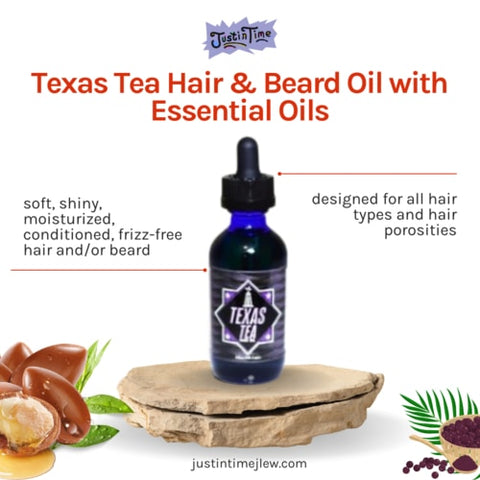
RELATED: PURCHASE A BOTTLE OF TEXAS TEA OIL


